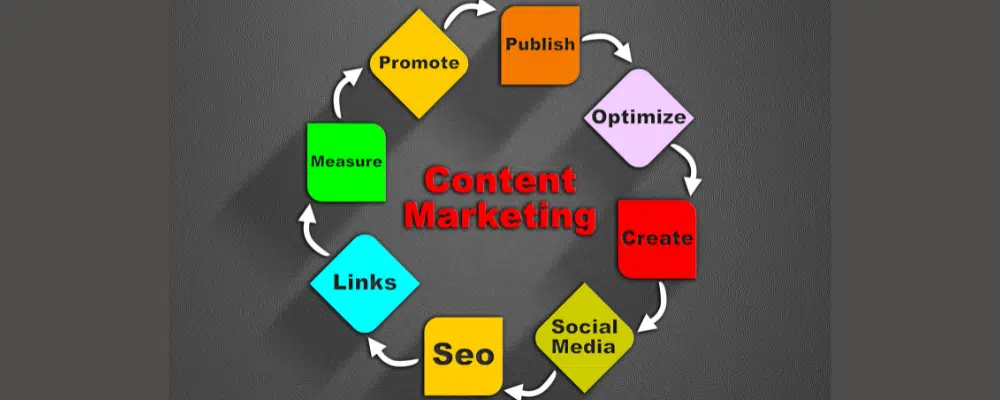Content marketing has become the indispensable compass for modern businesses navigating the ever-changing terrain of the modern business world. As the digital era continues to redefine the rules of engagement between businesses and their audiences, content marketing has risen to the forefront as a potent tool for establishing brand identity, nurturing customer relationships, and driving sustainable growth. This is particularly crucial for small businesses striving to make their mark in a fiercely competitive environment.
However, the path to effective content marketing for small businesses is not without its challenges, and one of the most significant hurdles is often the constraint of limited budgets. Smaller enterprises may not have the financial firepower of their larger counterparts, making it daunting to conceive and execute a robust content marketing strategy. Yet, it’s precisely in the face of such constraints that innovation and resourcefulness shine brightest.
Identify Your Audience and Goals
In the world of content marketing, understanding your audience is like knowing the players in a game before you step onto the field. It’s essential. Define the target audience for your content. This is your starting point. Your target audience represents the people who are most likely to be interested in your products or services. Who are they? What do they care about? What problems do they need solving? Take time to create a detailed profile of your ideal customer. This helps you tailor your content to their preferences and needs.

Goals are like the finish line in a race. They give your content marketing strategy direction and purpose. Are you looking to increase brand awareness, generate leads, boost sales, or something else entirely? Defining clear goals will guide your content creation and help you measure success. Your audience and goals should dance together, not step on each other’s toes. If you’re aiming to sell high-end fashion to millennials, your content should reflect their interests and values. Aligning your content with your audience’s preferences makes it more engaging and effective. When your goals align with your audience, you’re more likely to achieve the results you desire.
What your audience wants to hear is more important than just what you want to say. Knowing your audience and setting clear goals are foundational steps in creating content that resonates and delivers results.
Content Strategy on a Budget
Creating great content doesn’t have to break the bank. It starts with smart planning.
- A content calendar can be thought of as your content compass. It’s like having a roadmap that helps you stay organized. With a calendar, you can schedule when and what to post. This prevents last-minute rushes and ensures a steady flow of content, even on a tight budget.
- One of the secrets to budget-friendly content marketing is recycling and repurposing. It’s like turning leftovers into a delicious new dish. Don’t let your old content gather dust. Instead, update it, or spin it into new formats. For example, a popular blog post can become a video, infographic, or podcast.
- Evergreen content is like a timeless classic in the world of content marketing. It is information that is timeless. When you create evergreen content, you get more mileage out of it because it doesn’t expire quickly. Plus, it continues to attract readers and viewers long after you’ve published it.
DIY Content Creation
You don’t need a Hollywood budget to create captivating content. Here’s how:
- The internet is packed with budget-friendly tools that can help you create professional-looking content. Whether it’s graphic design, video editing, or writing, there are tools and software available at various price points. Some even offer free versions with essential features. So, you can unleash your creativity without emptying your wallet.
- Visual content is a powerhouse in the world of content marketing. To create eye-catching visuals, you don’t need to be a professional designer. Simple design principles and free or low-cost design tools can help you craft visuals that grab attention and convey your message effectively.
- Sometimes, the best content comes from your own customers or followers. User-generated content is like a testimonial on steroids. Encourage your audience to create content related to your products or services. Share their reviews, photos, and stories. It not only saves you time and money but also builds trust and authenticity.

Always remember that a tight budget can spark creativity. By planning your content strategically and using affordable tools, you can create content that resonates with your audience without breaking the bank.
Leveraging SEO for Cost-Effective Visibility
Keyword research is like the compass guiding your content through the vast digital wilderness. In simple terms, keyword research is the process of discovering the words and phrases people use in search engines to find information. It’s like knowing the language your audience speaks online. Understanding these keywords will help you better tailor your content to match what users are looking for, boosting the likelihood that it will show up in search results.
You don’t need a big budget to dive into keyword research. There are many accessible, cost-effective tools. These tools can help you identify relevant keywords, analyze their search volume, and even spy on your competitors’ keyword strategies. They’re like treasure maps for uncovering the best keywords for your content.
Long-tail keywords are like hidden gems in the SEO world. They are longer, more specific phrases that often have less competition. By targeting these, you can reach a niche audience that’s closer to making a purchase decision. Tips for finding them include thinking like your audience, using question keywords, and exploring related search terms.

On-Page SEO
On-page SEO is like the fine-tuning of your content engine. On-page SEO involves optimizing individual web pages to rank higher in search results and attract more organic (non-paid) traffic. This includes things like optimizing your page’s title, URL, headings, and content. It’s the art of telling search engines what your content is all about so they can match it with relevant search queries.
Meta tags, headers (like H1, H2, H3), and the content itself are the key elements you can optimize. Craft compelling meta titles and descriptions that encourage clicks, use headers to structure your content for readability and search engines, and naturally incorporate your target keywords within your content.
In today’s mobile-first world, optimizing for mobile devices is non-negotiable. If your website and content aren’t mobile-friendly, you risk losing a significant chunk of your audience. Mobile optimization ensures that your content looks and functions well on smartphones and tablets, improving user experience and search engine rankings.
Cost-Efficient Content Distribution
Social Media Marketing
Social media can be a powerful amplifier for your content, even on a tight budget. There are differences among the various social media platforms. A good analogy is choosing the appropriate tool for the job. Start by understanding where your target audience hangs out online. Different platforms cater to various interests and demographics. Focus your efforts on the platforms where your audience is most active to get the best results without wasting resources.
Making an impression on social media does not require a large advertising budget. There are several cost-effective tactics at your disposal, such as creating engaging organic content, leveraging user-generated content, and participating in relevant online communities. These tactics can help you build your brand and engage with your audience without spending a fortune.
Success on social media depends on consistency. Post on a consistent basis to keep readers engaged and informed. Regular updates remind your followers that you’re active and reliable, which can boost trust and loyalty.
Email Marketing
Email marketing is a budget-friendly superhero in the content distribution world. Email marketing is like having a direct line to your audience’s inbox. It’s cost-effective because it doesn’t require hefty advertising spends. With email, you can nurture leads, share valuable content, and promote your products or services at a fraction of the cost of other marketing channels.

Your email list is like a goldmine of potential customers. Building it involves capturing the email addresses of interested parties through sign-up forms on your website, social media, or events. Once you have a list, segment it to send targeted content to specific groups based on their interests and behaviors. This ensures that your emails are more relevant and effective.
Collaborative Marketing for Small Businesses
Guest Blogging
Guest blogging allows you to tap into someone else’s audience and expertise. It’s like introducing yourself to a new group of potential customers. You can establish yourself as an authority in your field, build backlinks to your website for better SEO, and increase your brand’s visibility. It’s a cost-effective way to expand your reach.
Finding the right guest posting opportunities is like searching for hidden treasures. Start by researching websites and blogs in your niche that accept guest posts. Look for sites with a good reputation and engaged audiences. Reach out to them with well-crafted pitches that highlight what you can offer their readers.
Guest posts should be valuable, not just self-promotional. It’s like being a welcomed guest at someone’s house – you want to bring something of value. Create content that educates, entertains, or solves a problem for the readers of the host blog. Make sure it aligns with their audience’s interests and needs.
Cross-Promotion
Collaboration can open doors to new opportunities. Partnering with complementary businesses can help you access their customer base and vice versa. It’s a way to pool resources, whether that’s through joint marketing campaigns, co-hosted events, or product bundles. This can be particularly beneficial for small businesses looking to expand their reach without significant costs.
There are various ways to cross-promote, depending on your industry and goals. Consider running joint social media contests, co-writing blog posts, or featuring each other’s products or services in newsletters. Brainstorm creative ways to leverage each other’s strengths and assets.
Success stories are like a guiding light, showing you what’s possible. Share examples of businesses that have successfully employed cross-promotion strategies. Highlight the outcomes, whether it’s increased website traffic, more social media followers, or higher sales. Real-world examples can inspire and provide practical insights.
Conclusion
Budget constraints need not be a barrier to small businesses looking to make their mark in the world of content marketing. Armed with the strategies and insights shared in this guide, you have the tools to navigate this dynamic landscape efficiently and effectively. Remember, success in content marketing doesn’t always require deep pockets; it demands creativity, consistency, and a commitment to delivering value to your audience. So, embrace these budget-friendly tactics, chart your course with confidence, and watch your small business thrive in the digital age. Please get in touch if you have any questions or require more help. We’re here to support your journey to success.




